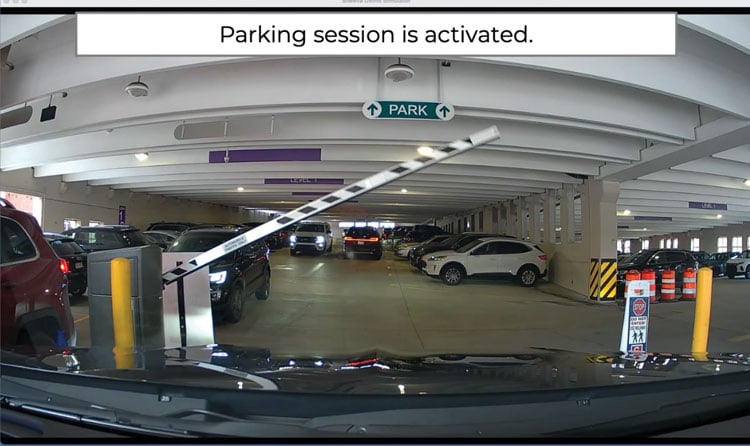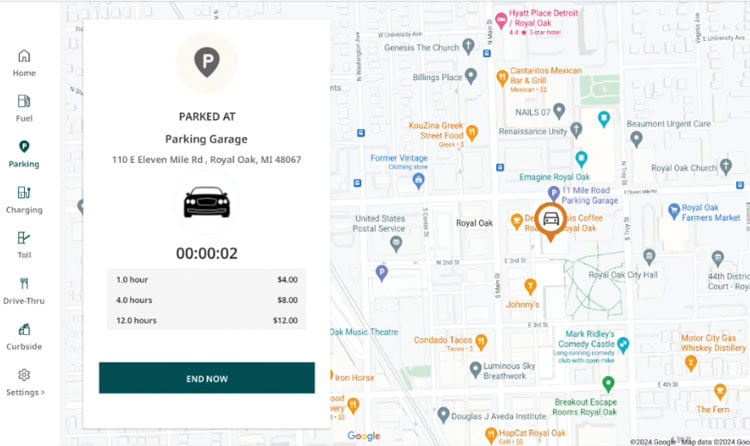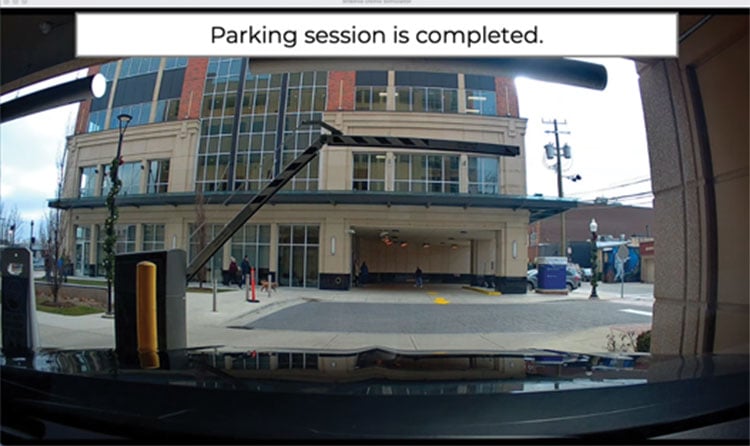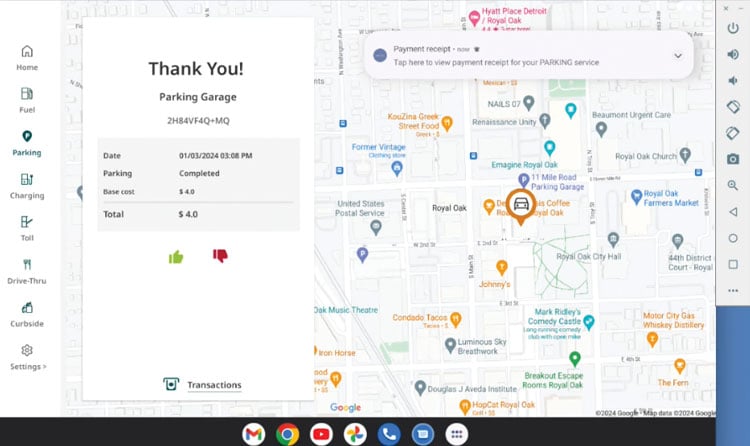How in-vehicle payments and precise location data can unlock better customer experiences and new revenues for parking managers.
By Evgeny Klochikhin
In a global 2022 survey of nearly 5,000 drivers about what features they’d like their connected car to offer, research firm TechInsights heard a unified yelp of a common pain these drivers wanted soothed.
“Help me find and pay for parking,” they said.
Out of 28 possible new features, making parking easier ranked first globally and second in the United States, according to the “Connected Features Interest Survey Report” released by TechInsights in March 2023.
This common request is personal to me as well. I founded the mobility startup Sheeva.AI after experiencing that problem first-hand. In my case, I needed to easily pay for parking while taking my pregnant wife to the hospital.
Trying to find a parking space, and then find an attendant or a meter to pay for it — in a moment when my focus was elsewhere — made me wonder, "Why can't I just pay for parking from the car and leave? The car knows its location. The parking price is also known."
Marrying precise location to API-driven communication and payment via an embedded digital wallet in the car — enabling a user to pay for parking with one touch of the car’s infotainment screen — is not only the answer to drivers’ parking needs, but the key to a premium customer experience and possible new revenue streams for the parking asset owner or manager as well.
This conclusion holds true whether that parking asset manager is a municipality with a “smart city” mindset or a private sector owner looking for efficiencies and a better return on investment.
Today’s stressful customer journey
Let’s first take a look at the current customer journey for parking.
If it’s on-street, you’ll need to find a space. Then you’ll need to know the “rules” about that space in real-time: street cleaning days, loading zone time restrictions, and so on. Then you’ll need to “feed the meter,” either by means of coins, a payment card, or an app.
Do you have coins or a credit card with you? Where is the kiosk? If you find it, do you remember your space number…or your license plate? Do you have the right parking app for this community and not the next town over? Is your payment information loaded into the app? Can you be sure you’ve picked the right “zone” in the app to avoid a ticket?
If it’s a garage or parking lot, it’s a little easier. There are centralized payment kiosks or attendants, but are they working? Do you pay now and return to your car with a receipt to put on the dash or do you pay when you return? How long do you have after you’ve paid to make sure you exit the garage?
And in both scenarios, how do you easily add time if there’s no app? Can you get back to the garage? Is there premium pricing? If so, what time does it start?
From the other side of the parking meter
Parking managers also have similar real-time concerns. For example, can they automatically remind and, if necessary, charge someone who overstays, rather than call for costly enforcement measures, like towing or booting? Can they get a real-time view of the parking inventory so they know what’s available and what will turn over and when, perhaps leading to dynamic pricing that could maximize returns?
Even when they have all of this data, what do parking managers really know about these customers? How long did they have to travel before parking their vehicle? Are they a frequent visitor who might appreciate some loyalty perks for parking more often at a given location or are they a one-off customer who will never return? How long did they have to circle around before they could find a spot? If it took them a long time to find a spot, did that result from an occupancy problem or poor parking signage that was not easily visible to the driver?
In many North American cities, on-street parking revenues come from two key sources: fees and enforcement. What’s less known is that enforcement is often two-thirds of the budgeted revenue. I think everyone can agree that getting a parking ticket or retrieving their car from an impound lot is not the greatest customer experience. Yet at the same time, these same municipalities are often spending marketing dollars to entice people to certain neighborhoods to increase economic activity. But if the free concert the city promised me in the downtown business district came with a $75 parking ticket for overstaying a meter, the city misses out on the desired effect.
One more thing to think about today: Electric vehicle (EV) drivers would love to charge while they park. What’s the best pricing model for this option? How do you simplify payment for both the parking and the charging, making it all possible from inside the car with one touch?




Revenue control and additional streams beyond the parking
Imagine a scenario in which a driver simply pulls into a parking space, touches the infotainment screen once to confirm the details of their parking stay, and leaves their vehicle. If a driver can find and pay for parking all from the car before they’ve even stepped out, that solves the pain point highlighted in the TechInsights survey.
If done right, this approach saves parking owners and managers the headache of controlling revenue collection, because parking is already paid for inside the car. At the same time, drivers can be lured into the specific parking structures while circling around and using in-car navigation.
You can enable safe, fast payment without swiping cards, opening apps, or scanning QR codes. Instead, an embedded multiuse tokenization platform, serving as the car’s digital wallet, would enable the payment and any subsequent add-on payments, providing a digital receipt in real-time.
This approach completely mitigates the risk highlighted in recent news reports about scam QR codes that direct customers to a fake website that aims to fool them into paying the scammers instead of paying for parking. Compounding the problem, the victims in such cases think they’ve paid for parking and then are subject to enforcement efforts.
You can know the real-time occupancy of your facilities exactly. This information requires precise localization of every vehicle inside a parking structure or on a street. Every car knows exactly where it is and communicates that to the parking point-of-sale system or inventory management platform.
You can manage pricing in real-time. Whether it’s street sweeping days that make some spaces “unavailable” at certain times, or a major sporting event nearby that moves pricing from hourly to a flat rate, using precise location and the infotainment screen means the information about that space can be communicated to the driver as well, before they engage in the transaction.
This approach can mean setting peak hour pricing dynamically, changing with the days or seasons as needed, and enabling asset owners to negotiate with venues or retailers around them for parking incentives or conditional special pricing within loyalty programs or upon digital membership verification.
Beyond parking: unlocking new opportunities
You can enable other “parking-adjacent” transactions. Using a “vehicle-commerce” approach inside the car cabin, with the car as the interface, means adding other opportunities for transactions. This can include adding time to the parking session but also to activate and pay for an EV charging session. Is your parking garage in long-term parking at an airport? You could suggest, schedule, and take payment for a car wash or car detailing service, for example.
If the driver is an employee of a company leasing spaces in the structure, this situation can also be managed via the car infotainment screen. The gate at the garage or the lot would recognize the vehicle as having permission to park, without distributing extra RFID tags or having an attendant confirm the access.
If the parking manager owns several parking sites in a certain region, this type of transaction platform can be the basis for creating a membership program at a flat monthly rate, creating an opportunity for recurring revenues.
If you’re a municipal parking manager, maybe you’d want the driver to know some history about the neighborhood, or to be able to explore small businesses for lunch or gift shopping, or to know about a free event going on nearby. This type of information can also be communicated via the vehicle’s infotainment screen.
You can easily provide receipts and enable fleet programs. Although the car is the payment platform in this scenario, each driver of the vehicle would likely enable their specific wallet when they get in, just as easily as choosing a Netflix user profile.
That may be one thing in a family in which the parents and a teenage child drive the same car, and each has their own credit or debit card. However, consider how this approach simplifies record-keeping for fleet drivers or even those who are just expensing their parking session.
Creating a premium customer experience should start with answering drivers’ calls to easily find and pay for parking and avoid tickets or fines. But that’s just the start.
In a future where cars will become more connected and more autonomous, if not fully autonomous anytime soon, that means the drivers and passengers of those vehicles will want you to make their lives more efficient and effective while delivering on your core product. Memorable experiences will mean repeat customers and new revenue opportunities if executed correctly.
Evgeny Klochikhin is the founder and chief executive officer of Sheeva.AI. He can be reached at eklochikhin@sheeva.ai.
















